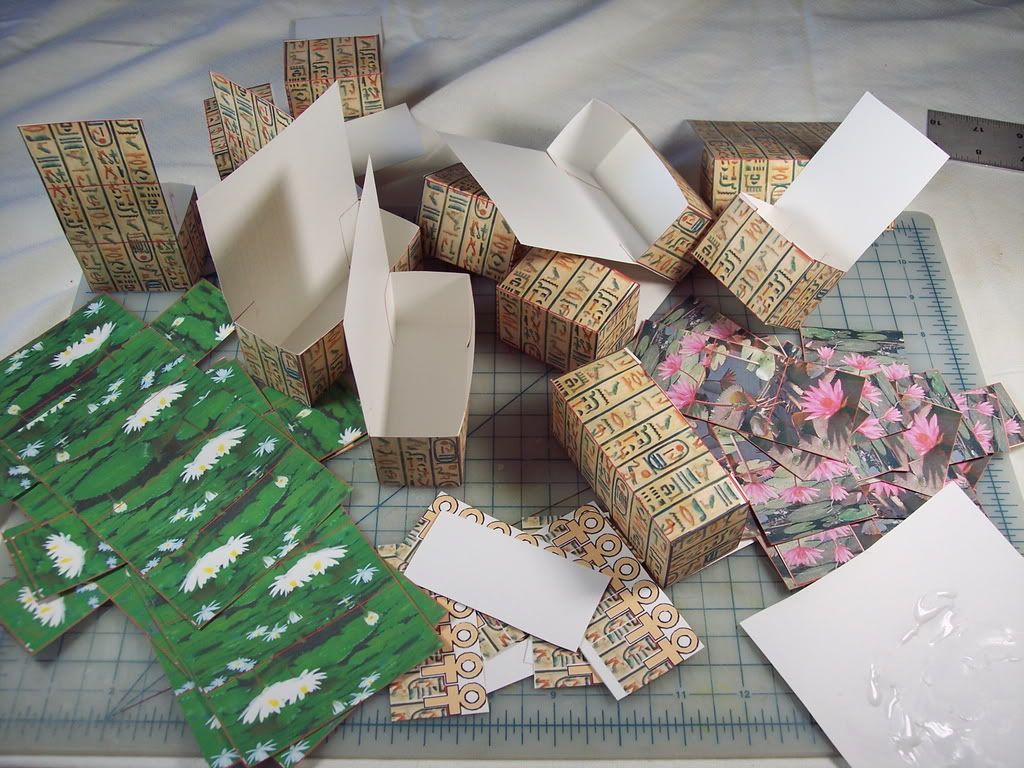
Chocolate
| Templates for the chocolate boxes, their outsides and their insides are separate Photoshoped jpg files. They're printed, cut, and glued together. The chocolate tempering process is not photographed. This time, a tempering machine was used. It brings the chocolate to the precise temperature for the type of chocolate being tempered, white, milk, or dark. The machine offers two methods of getting at the target temperature. Being a machine, it's able to bring the melted mass directly to the target temperature. It alerts the operator when to add seed chocolate to clue the melted mass to its crystalline structure. The second method is more traditional. It heats the melted mass slightly beyond the target temperature, then cools the mass slightly below the target temperature, alerts the operator to add seed chocolate and when to remove it, reaches the target temperature and alerts the operator when it's done. This same process can be speeded by using hot and cold water baths. The temperature ranges here are just a few degrees above and below body temperature. Care must be taken not to allow any water to enter the melted chocolate or else the entire melted mass will seize, in a way similar to how adding a small amount of water to a large amount of sugar seizes sugar into unmanageable lumps. |

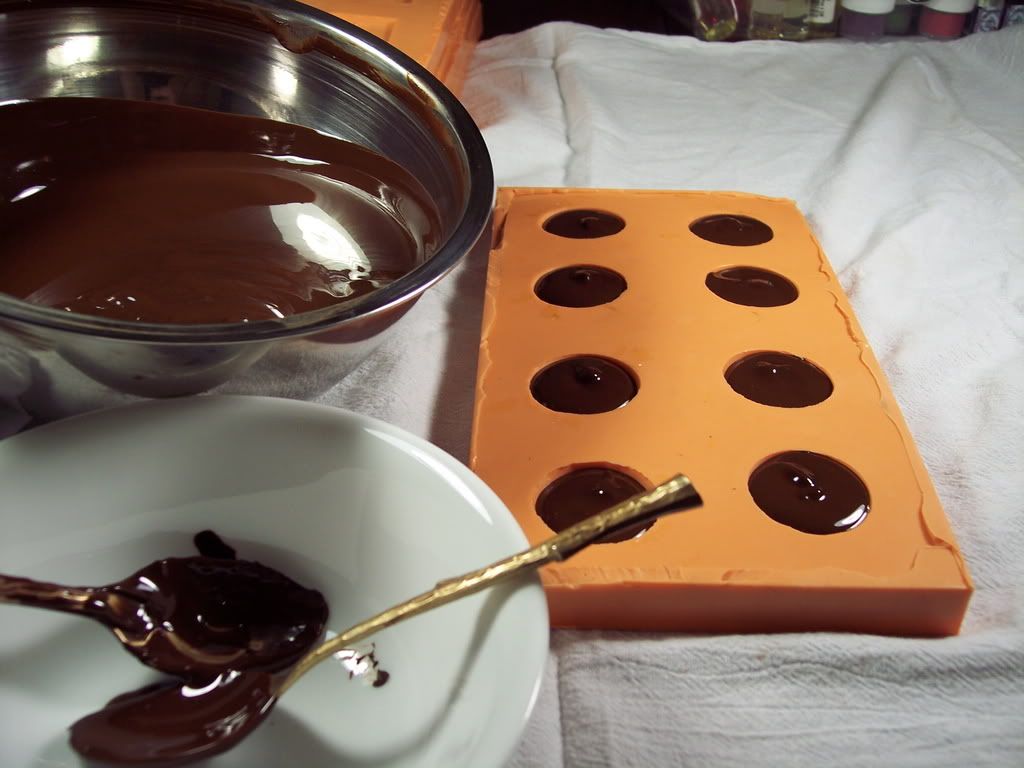
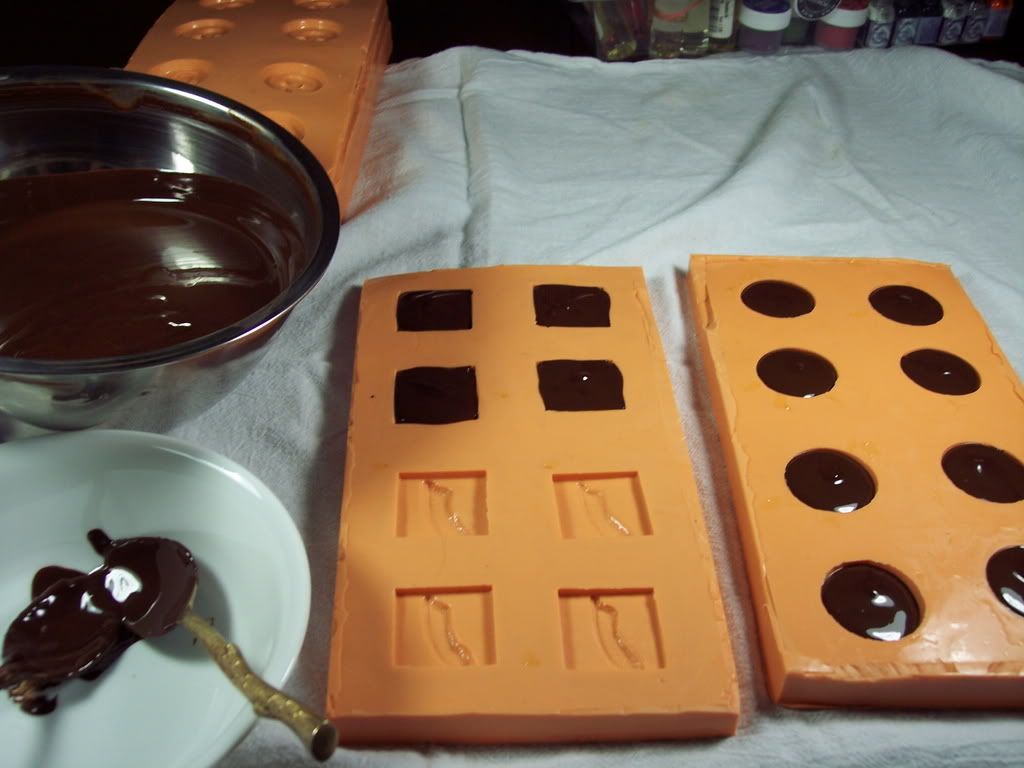
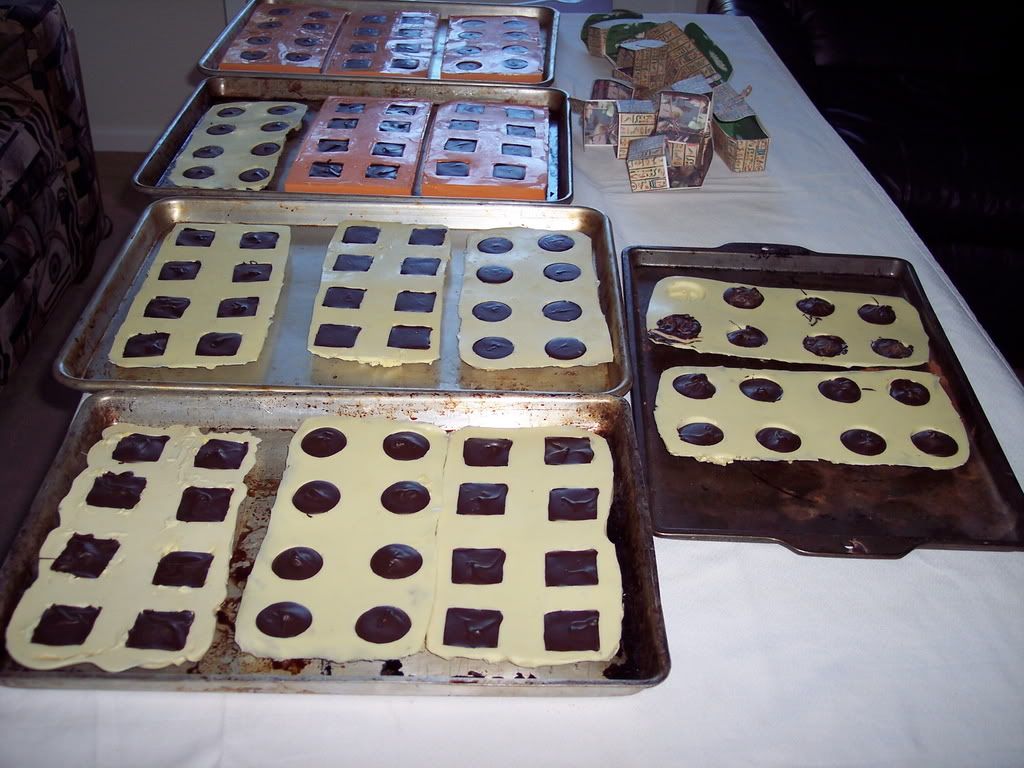
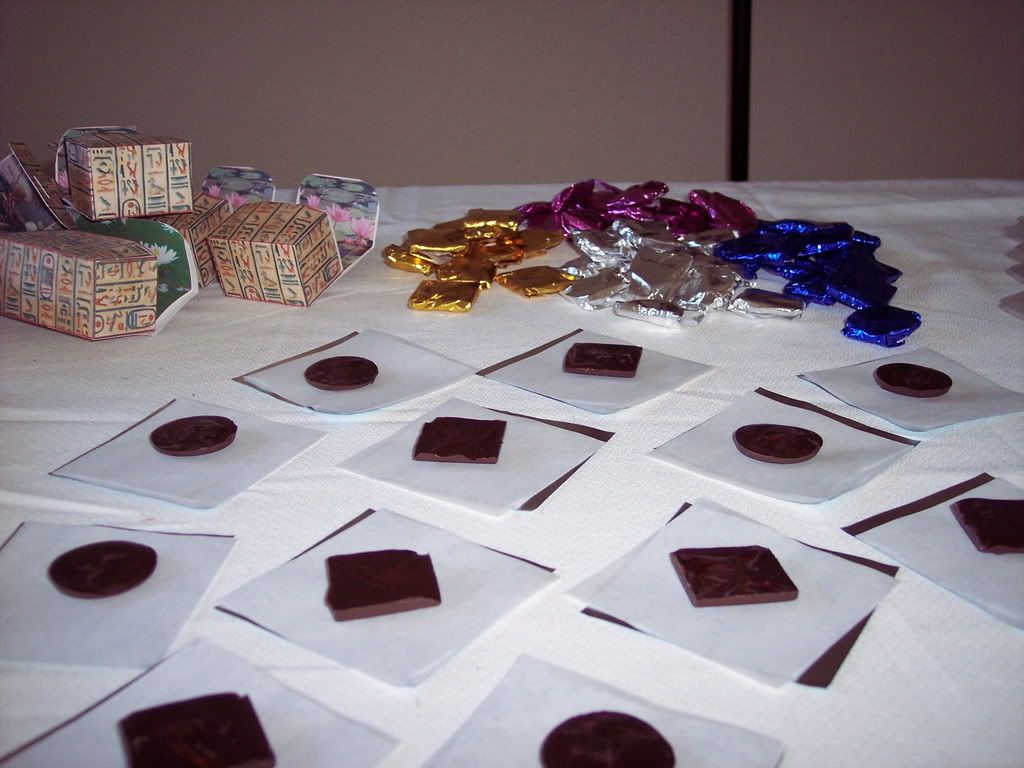
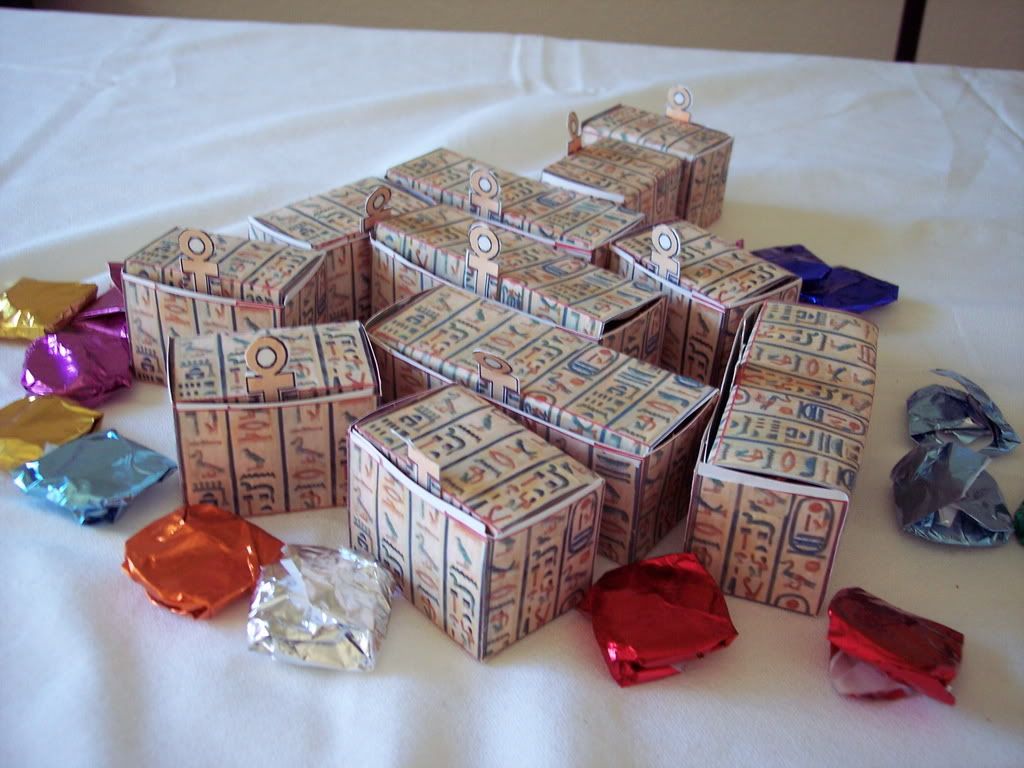
| The melting point of chocolate is slightly below body temperature. It's always described as a range of degrees rather than a steady precise number. That's because chocolate is a complex amalgam of fats and solids each with their own melting point. The producer of a particular chocolate provides the temperatures for tempering, a range of temperature for that particular chocolate, which itself is combination of chocolate from various sources. This is true even with single-source chocolates. It's analogous to variety resulting from micro-conditions experienced by vintners. (Actually, it true for all farm food.) Usually manufacturers combine cocoa beans from a variety of sources the same way coffee beans are combined in order for the final product over the long term of several runs to posses a somewhat subjectively vague but in some ways measurable and reliable consistency. It's an art, this wine, coffee and chocolate blending But why bother tempering chocolate at all? Hardened chocolate is a crystalline molecular structure. Tempering is a way to help the chocolate harden with a more organized structure. Tempering is analogous to stacked chairs. Carefully tempered chocolate is more like chairs neatly stacked and arranged in columns and rows, contrasted with chairs stored by carelessly tossing them into a closet. The final product, when formed into bars or coating candy is left with a sheen from the mold and breaks with a distinctive snap. This doesn't happen with untempered chocolate. |